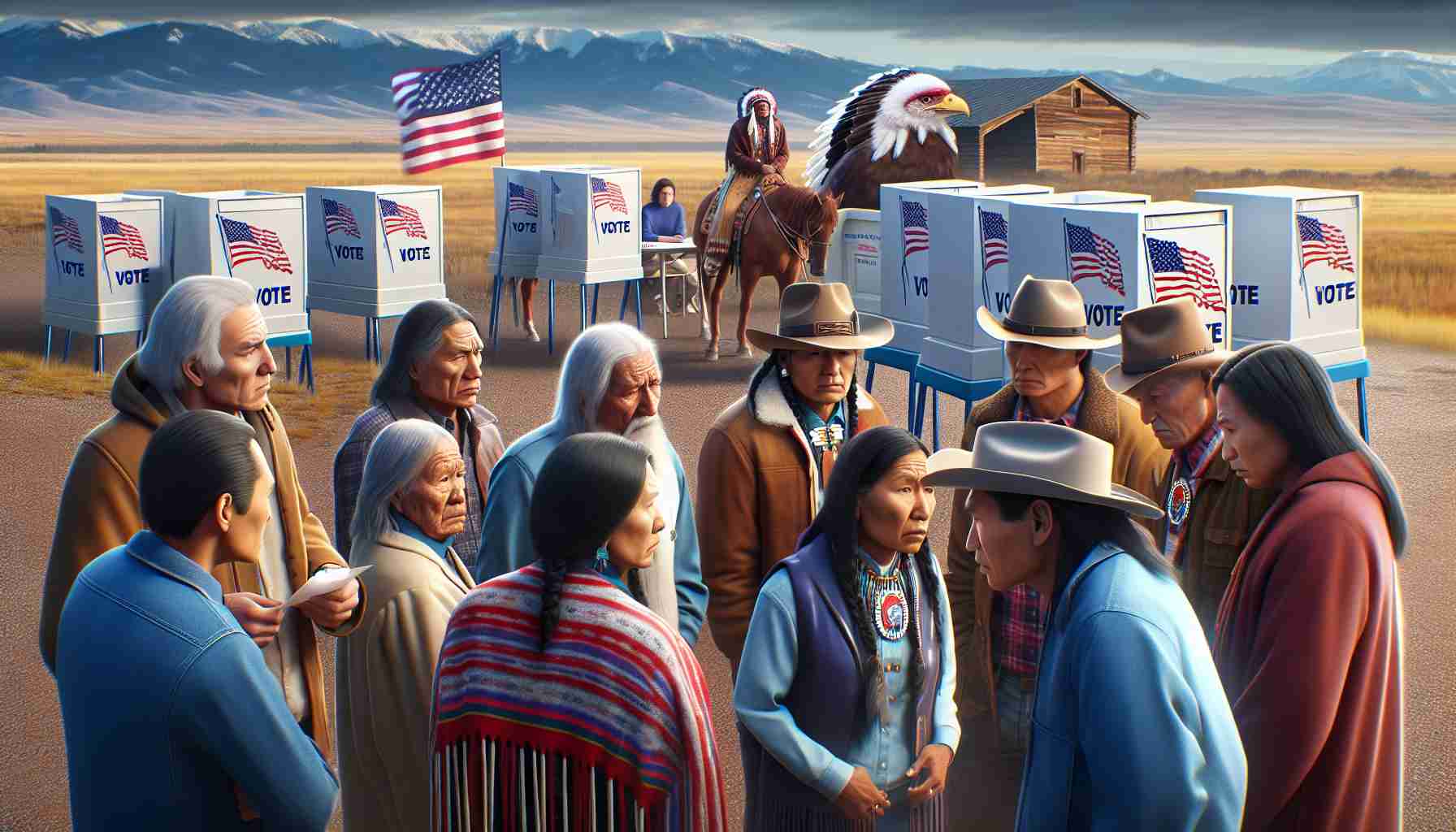
In Great Falls, Montana, the struggle for voting access continues as Native American voters on the Fort Peck Reservation seek to establish two satellite voting offices. The initiative is part of a lawsuit aimed at ensuring that these voters have adequate access to participate in elections. Recently, discussions resumed between the plaintiff representatives and local county officials from Valley and Roosevelt counties.
County leaders have expressed difficulty in setting up these additional voting locations, citing staffing challenges as a primary obstacle. Efforts are underway to address these issues, with discussions focused on overcoming logistical hurdles. Advocates emphasize the importance of providing proper training to personnel to ensure a smooth election process. The urgency of these discussions is heightened as election day approaches, with advocates stressing that waiting for future elections is not a viable solution.
The highlight of the plaintiffs’ request is for the voting offices to operate a total of 179 hours, mirroring standard operating hours found in other regions across the state. With election day less than a month away, advocates believe there is sufficient time to implement these offices effectively, referencing successful precedents where similar setups were achieved in under two weeks.
As the situation develops, both parties remain in negotiations, aiming to reach an agreement that ensures fair voting access for all residents in the area.
The Challenges in Voting Accessibility for Native Americans in Montana
Voting accessibility for Native Americans in Montana presents unique challenges, particularly for communities like those on the Fort Peck Reservation. While recent efforts to establish satellite voting offices have gained attention, many underlying issues complicate the voting landscape for Native American populations across the state.
What are the key challenges Native Americans face when voting in Montana?
Several significant barriers hinder effective participation in elections for Native American voters. One major challenge is geographic isolation. Many Native American communities are located in remote areas, making it difficult for residents to travel to polling places, especially those lacking reliable transportation. Moreover, historical disenfranchisement has created a landscape of distrust toward voting systems, causing disillusionment among potential voters.
Another key challenge is the insufficient infrastructure for voting. In addition to the proposed satellite offices, many reservations lack adequate facilities or resources to conduct elections. This lack of infrastructure is compounded by cultural and language barriers. For some Native Americans, English may not be their first language, leading to misunderstandings about the voting process or the implications of new legislation.
What controversies are associated with voting accessibility?
Controversies often arise regarding the adequacy of funding and resources allocated for voting on reservations. Critics argue that insufficient investment in voting infrastructure reflects systemic neglect and priorities that do not align with the needs of Native American communities. Additionally, the ongoing negotiations between county officials and advocates for satellite voting offices exemplify the tension between local governance and federal mandates for equitable voting access.
What are the advantages and disadvantages of newly proposed voting offices?
The establishment of new satellite voting offices offers several advantages:
1. Increased Accessibility: By having voting locations closer to communities, it reduces travel burdens, encouraging voter participation.
2. Reduced Wait Times: Smaller, localized polling places can help alleviate congestion and long lines commonly seen in major electoral hubs.
3. Culturally Relevant Support: Local offices may be staffed with community members who understand cultural nuances, improving the overall voting experience.
However, there are disadvantages to consider:
1. Resource Limitations: Setting up new offices requires staffing, training, and equipment, which may strain existing resources, especially in rural areas.
2. Temporary Solutions: If these offices are not sustainable, they may provide a flawed sense of security, with voters reverting back to accessibility issues in future elections.
3. Political Pushback: Efforts to establish new voting locations may face political opposition, leading to further entrenched divisions within local governance.
How can these challenges be addressed effectively?
To combat these accessibility challenges, several strategies can be employed:
– Increasing Funding: Prioritizing funding for voting infrastructure on reservations would ensure that adequate resources are available for satellite offices and training.
– Community Engagement: Encouraging local residents to participate in the electoral process, both as voters and in teaching roles, can foster trust and ensure that cultural considerations are respected in the voting process.
– Legislative Advocacy: Advocates can push for stronger legislation to mandate equitable voting practices, ensuring ongoing support and accountability for election fairness.
Conclusion
The challenges in voting accessibility for Native Americans in Montana highlight a critical need for systemic change. Establishing more accessible voting options is not merely about logistical improvements but also about restoring faith in the electoral process and ensuring that every voice is heard. As discussions continue around the proposed satellite voting offices, the broader implications of accessibility for Native American voters must remain in focus.
For additional resources and updates on voting rights and accessibility, visit npr.org or ncai.org.



